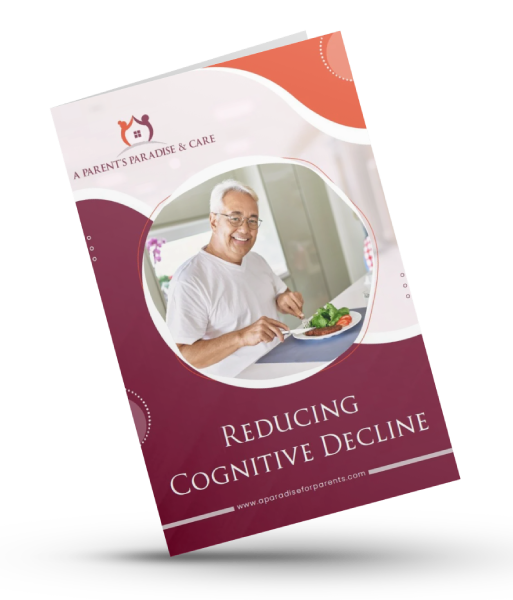When you know it’s time for your loved one to move into a senior living community, you’ll be faced with different choices. We want to give you information today about two senior living options – assisted living and independent living.
It’s easy to see why people confuse these two senior living options. In both communities:
- Your loved one will be surrounded by other seniors
- There will be activities to boost social interaction, and
- There are various amenities such as personal trainers, pools, gardens, and the like.
The major difference between the two senior living communities lies in the level of care provided.
Assisted Living Community
Assisted living communities are for seniors who cannot live alone because they have special needs. Or they need an extra hand when it comes to day-to-day activities. However, these seniors are not too sick to require extensive care that a nursing home facility or hospital offers.
Unlike nursing homes, assisted living facilities don’t need to have a skilled nursing staff available 24/7. Highly trained caregiving staff are always on the premises to care for the seniors, prepare meals, and provide housekeeping.
Here are some of the basic services an assisted living facility may offer:
- Assistance in daily activities such as eating, getting dressed, bathing, using the bathroom, and the like.
- Transportation services
- Wellness programs
- Health services and medication management
- Social activities and events
- Housekeeping
- Hospice programs
Independent Living Community
On the other hand, independent living communities cater to seniors who are fully capable of living independently. Think of it as housing for senior residents. These senior living communities are for older people who want to move out of their own home. Perhaps they feel like their home is big for them or they want to mingle with other active seniors. Independent living lets seniors live in a comfortable home that’s healthy, safe, and interactive.
Independent living is for seniors who can generally take care of themselves without assistance.
Independent living may offer:
- Meal preparation
- Housekeeping
- Landscaping
- Security services
- Wellness programs
- Social events
- Transportation
Senior Living Community Differences
Now that you know the definition of assisted living and independent living communities, it’s time to dig a little deeper and find out the key differences between the two.
Living Space
Independent Living: The type of living spaces generally depends on the home. It can range from apartment-style communities or a number of rooms in a building. But as with most independent living communities, residents have their own living space. Residents like the privacy. Often they have a common room where they can get together and mingle with other seniors.
If you’re not familiar with the term independent living, you might be familiar with its other aliases – retirement community, a 55+ community, a retirement home, senior apartments, active adult community, or a Continuing Care Retirement Community (CCRC).
Assisted Living: The most common type of assisted living set up is the apartment-style units. The senior’s room may or may not have a kitchen. Other facilities offer specialized care units or memory care. They usually have an increased security system. They may not have kitchens inside the senior’s room or the apartment itself due to safety concerns.
Care Services and Other Amenities
Independent Living: The goal of independent living is to make the senior’s day-to-day lives easier for them. With a higher quality of life, they are able to live independently and enjoy life longer.
Since the residents are active and healthy, independent living communities do not have an around-the-clock medical team. Seniors just like to live life in these communities without the hassle of regular home ownership.
Assisted Living: As mentioned, assisted living caters to seniors who cannot live alone and require assistance with daily activities, such as bathing, eating, medication management, housekeeping, and others.
Assisted living community’s staff has an on-duty medical professional, usually a certified nurse practitioner and professional caregivers. Many times the nurse will check up on residents at least once a week.
Nurses also create ‘service plans’ for the residents. The service plans help guide the resident to improve their health.
Some facilities, like A Paradise For Parents, offer a special memory care unit for residents who have mild to severe dementia. However, most facilities do not offer a hands-on care for seniors with serious mental and physical health problems.
Independent living and assisted living communities have a designated schedule for recreational activities. Although the activities are unique in every facility, the common ones include:
- Field trips
- Support and discussion groups
- Game nights
- Group exercises
- Holiday celebrations
- Continuing education courses
Both communities also offer transportation services to drive residents to doctor’s appointments, grocery stores, and other errands.
Payment Options and Financial Considerations
Other than the level of care provided, another main difference between the two communities is the access to financial resources. Let’s face it, senior care is expensive and financial resources really help cut the out-of-pocket costs of living in these communities.
Independent Living: Just like renting a house, rent is the main cost for seniors in independent living. If the community offers different kinds of recreational opportunities, such as private golf courses and the like, additional expenses may be incurred.
Healthcare financial aid programs of the government will not cover the costs of independent living communities. The senior won’t be receiving medical care services. Instead, you can use pension income, Social Security, retirement savings, and the senior’s personal funds to pay for independent living.
Assisted Living: Senior residents in assisted living communities who will need specialized care will have to pay additional costs. People in assisted living need medical attention and therefore that can be covered
You can tap into different financial resources to pay for assisted living, such as savings and personal funds, long-term care insurance policies, life settlements, reverse mortgage funds, annuities, and Aid and Attendance benefits if your loved one is a veteran.
Medicaid offers financial assistance but it varies from state-to-state. Medicare, on the other hand, only covers a limited portion of the costs. Only for the duration a short-term stay to help a senior recover from a surgery or temporary illness.
Independent vs. Assisted Living: Which Is Better?
If your elderly loved one is in good health and can live independently, independent living communities are a viable option. Your loved one won’t need to maintain or keep up their homes when they move into assisted living. Plus, it’s easier for them to widen their social circle and avoid social isolation.
However, if your elderly loved one needs help with daily activities or if they have dementia or Alzheimer’s, assisted living is a better option. Your elderly loved one will get all the help he/she needs but can still remain relatively independent.
If you want to know more about assisted living facilities, A Paradise for Parents staff and our resources can answer all your questions. Don’t hesitate to give us a call at (623) 295-9890 or email us at cam@aparadiseforparents.com to know more about the services we offer. You can also fill out an online form located on our homepage. We’d be happy to assist you in your search for an assisted living facility for your loved one.





